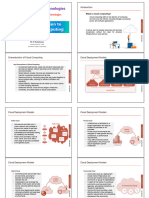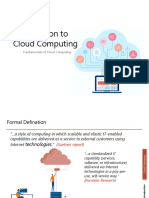0% found this document useful (0 votes)
3 views2 pagesCloud Computing
Cloud computing delivers various computing services over the internet, enabling faster innovation and flexible resources. It has evolved since the 1960s, with major providers like AWS, Google, and Microsoft leading the market. Key types include public, private, and hybrid clouds, while services range from IaaS to SaaS, each with specific deployment steps and associated drawbacks like security risks and internet dependency.
Uploaded by
PRAJWAL PAWARCopyright
© © All Rights Reserved
We take content rights seriously. If you suspect this is your content, claim it here.
Available Formats
Download as DOCX, PDF, TXT or read online on Scribd
0% found this document useful (0 votes)
3 views2 pagesCloud Computing
Cloud computing delivers various computing services over the internet, enabling faster innovation and flexible resources. It has evolved since the 1960s, with major providers like AWS, Google, and Microsoft leading the market. Key types include public, private, and hybrid clouds, while services range from IaaS to SaaS, each with specific deployment steps and associated drawbacks like security risks and internet dependency.
Uploaded by
PRAJWAL PAWARCopyright
© © All Rights Reserved
We take content rights seriously. If you suspect this is your content, claim it here.
Available Formats
Download as DOCX, PDF, TXT or read online on Scribd
/ 2


























































